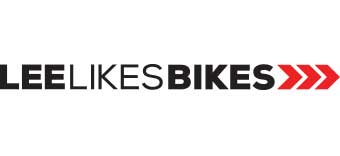About handlebar rise
Our friend and fellow LLBMTB member Sarah sent this interesting question:
— — —
Subject: Question about straight vs curved bar
Hi Lee,
I recently bought a Pivot Shadowcat. It has a curved bar, and I had it cut down to the size you and I talked about. My first bike, the Liv Lust, has a different geometry with 110 front travel vs the shadow at 150, and the geometry is different. This bike was also one of the only to have the stand over ht I needed. That said, the handling is very different in general, and with a curved bar, I wiped out on my first ride for a couple reasons (tire pressure too high, my mind wandered off the task at hand, hit a rock and wasn’t familiar with steering sensitivity.) What are your thoughts on flat vs curved bars? I don’t know how it would change the handling of this bike, but it definitely worked for me on the Lust.
Sarah
— — —
Hi Sarah,
Thank you for writing.
Terms
When you say a bar is straight, you’re describing what’s called a flat bar. On a flat bar the grips are at or very near the same height as the stem.
When you say a bar is curved, you’re describing what’s called a riser bar. On a riser bar the grips are above the stem. Bars might have a rise of 10, 15, 20, 30, 50, 75 or even 100 mm. I believe your Shadowcat has 20mm riser bars.
Bike styles
In general, a short travel cross country style bike like your Liv comes with a flat bar. It looks low and aero.
In general, a longer travel trail style bike like your Shadowcat comes with a riser bar. It looks tall and badass.
This is pretty standard in the bike world for no practical reason other than fashion and expectation. Like, you might see a spoiler on a sports car but seldom on a truck.
The frame of your Liv is pretty low in front (stack is about 567mm) because it has a shorter fork, plus it has a lower bar. This places the grips rather low relative to you. This is expected for this sort of bike, but in many cases the bars are too low for comfortable, anatomically correct riding. This is truer for taller riders.
The frame of your Shadowcat is taller in front (stack is about 605mm) because it has a taller fork, plus it has a higher bar. This places the grips rather high relative to you. This is expected for this sort of bike, but in many cases the bars are too high for comfortable, anatomically correct riding. This is truer for shorter riders.
In an ideal world
The distance between your bike’s bottom bracket and grips (RAD) is a function of your height and proportions, and the angle of that line relative to level (RAD angle) is a function of your mobility and riding preference. In most cases I advice the bike RAD to match your body RAD, and the RAD angle to be about 60 degrees. Ideally, all of your BMX and mountain bikes fit the same, so one set of muscle memory works everywhere.
I’m sorry to introduce complication, but this is how it works:
Bike RAD distance and RAD angle are created by these variables:
- Frame stack. Vertical distance between the center of the bottom bracket and the middle of the top of the head tube (the top of the front of the frame).
- Frame reach. Horizontal distance between the center of the bottom bracket and the middle of the top of the head tube (the top of the front of the frame).
- Head angle. This affects the angle of the stem.
- Stem height, angle and length.
- Handlebar rise and setback (horizontal distance from middle of the bar where the stem clamps it and the centerpoint of the grips).
- Spacers under the stem.
As a member of LLBMTB.com you have access to this bike calculator, which allows you to model the details of your bike before you spend the money. If you already have the frame, you can enter those numbers then play with your stem and handlebar to get the RAD and RAD angle you want.
Handlebar rise is the easiest way to raise or lower the grips.
Straight bars vs. curved bars
For a given target RAD and RAD angle:
The Liv is lower in front. It’ll likely need a bar with more rise.
The Shadowcat is higher in front. It’ll likely need a bar with less rise. For most un-tall riders on bikes like this, including me, I usually spec a bar with very low rise, then run it upside down.
Both of these notions fly in the face of fashion, but math is math.
To sum it up
A great dynamic mountain bike fit is all about the relationship between your hands and feet when you’re out of the saddle. For a given rider, bikes that are lower in front generally need bars with more rise (more curve), which bikes that are higher in front generally need bars with less rise (more straightness).
Does this help? If not please ask questions below.
Lee
Leave a Reply
Want to join the discussion?Feel free to contribute!





